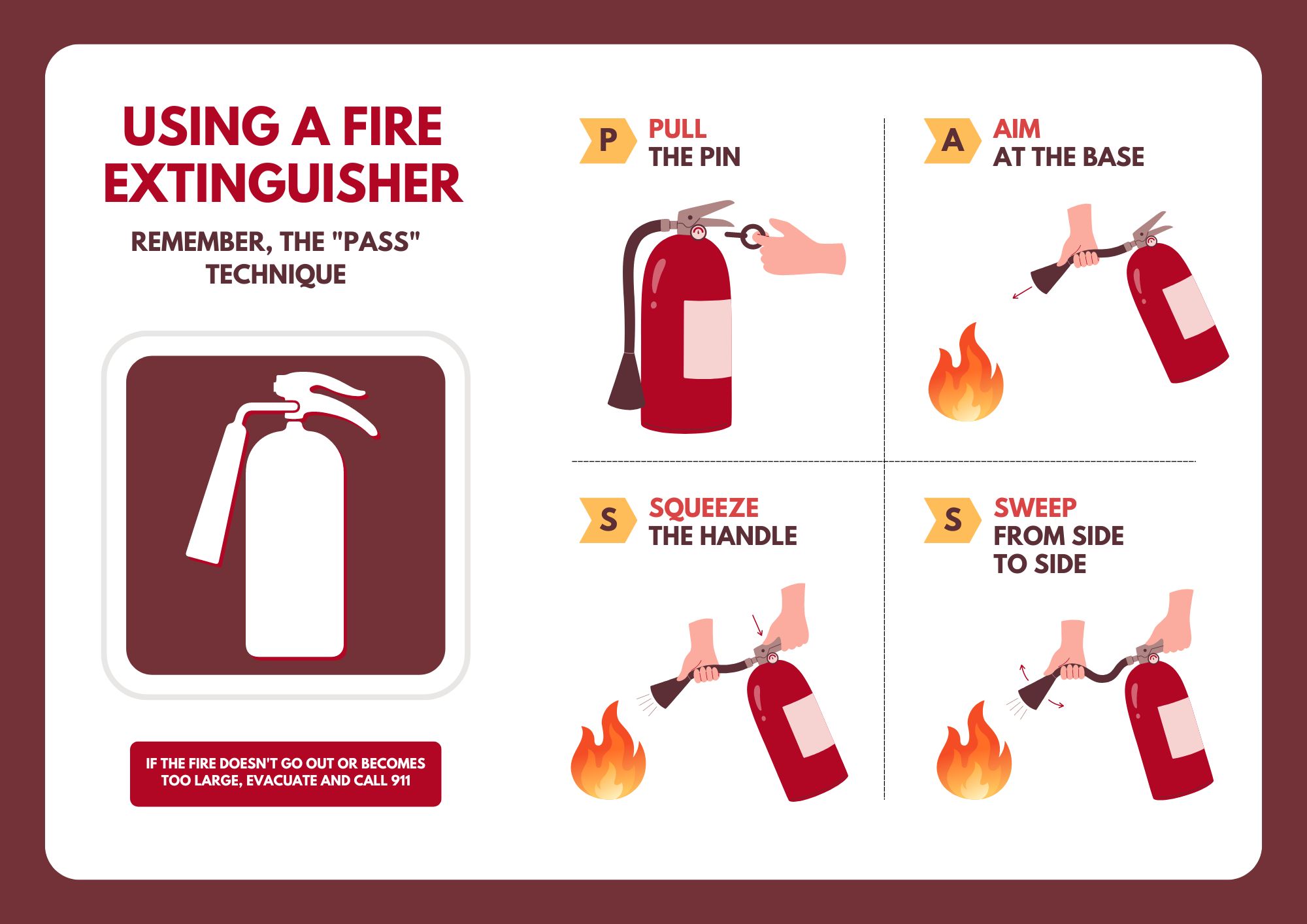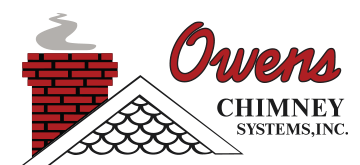If anyone knows how much comfort and joy a fireplace can bring to a home, it’s us! We’ve made fireplaces and chimneys our business, and not only are all our lead technicians certified not only by the Chimney Safety Institute of America (CSIA), but we’re also associated with the National Chimney Sweep Guild (NCSG). Critical to enjoying a fireplace, however, is the assurance of knowing you’re doing so safely.
Annual chimney inspections, regular chimney sweeping, prompt maintenance, and good fireplace practices all protect against the risk of uncontained fire. But other measures provide an important second line of protection: the early alert that can come from smoke detectors, and the correct, responsive use of a home fire extinguisher.
What Type of Fire Extinguisher Should I Have?
The first step in correctly using a fire extinguisher is having one – and having the right kind. If you didn’t know there were types of extinguishers, have no fear. There is a fairly simple classification system for fires, and different types of fire extinguishers match up to these classes. Once you’ve identified the most common potential hazards in your home environment, simply pick the corresponding extinguisher type.
For example, Class A fires involve ordinary combustibles such as wood, cloth, plastics, and paper. Class A extinguishers are designed to be effective at fighting these types of fires. Class B fires involve flammable liquids, while Class C fires involve electrical equipment. Class K fires are fueled by fats and cooking oils, so extinguishers in kitchens often are intended to combat these types of fires.
An ABC powder fire extinguisher tends to be a good choice for home use because it prepares you for a wide range of fire emergencies that can arise in homes. Once you’ve purchased a fire extinguisher for your home, be sure to locate it in an accessible place near potential hazards. Regularly check its pressure gauge and be mindful of the manufacturer’s maintenance recommendations and expiration date.
How Do I Use a Fire Extinguisher?
You can remember how to use a fire extinguisher by remembering the acronym PASS. It’s easy to remember because you’re passing the extinguishing agent over the flames to put them out. Here’s what it means:

- P – Pull the pin. There’s a pin located at the top of the fire extinguisher keeping it from accidentally discharging. That’s why this first step is essential. Pulling the pin will release the locking mechanism and allow you to discharge the extinguisher.
- A – Aim at the base of the fire. Direct the nozzle at the base of the flames, where the fuel source is located. Many extinguishers work by disrupting the chemical reaction of the fire or smothering it at the source, so aim for the base, not the tops, of the flames.
- S – Squeeze the handle. Firmly grip the handle and squeeze to steadily discharge the extinguishing agent onto the fire.
- S – Sweep from side to side. Continuing to squeeze the handle, move the nozzle or hose from side to side until the fire is completely out. Keep aiming at the base of the fire, and move carefully to cover the entire area that’s burning.
Remember that your safety and that of others in the house is paramount. If the fire starts to spread rapidly, or you’re unsure whether it’s safe to continue using the extinguisher, evacuate immediately and call emergency services for help.
What To Do After Using a Fire Extinguisher
Even if it was just for a small fire or test, there are steps you’ll need to take after using a fire extinguisher.
If anything was discharged at all, your extinguisher will need to be replaced or refilled by a professional as soon as possible. If the extinguisher is deemed no longer usable, follow local regulations for disposing of it safely. You’ll need to talk to your local fire department or waste management for guidelines for disposal that ensure your extinguisher doesn’t pose any environmental or safety risks.
Do Fire Extinguishers Expire?
Fire extinguishers do have expiration dates. Even if it hasn’t been used, over time the pressure within the extinguisher can decrease, which will reduce its effectiveness. Most fire extinguishers need to be replaced or serviced after 5 – 15 years. The exact date will depend on the type of extinguisher and manufacturer’s guidelines. Look for a label or tag on the extinguisher that indicates when it was manufactured and when it should be replaced.
In the meantime, monitor your fire extinguisher’s condition. Check the pressure gauge to ensure it’s properly pressurized, and look for signs of corrosion or physical damage that could compromise its ability to work effectively if a situation arose when you’d need it.
If you need to dispose of an expired fire extinguisher, follow the guidelines for safe disposal provided by local authorities.
Prioritizing Safety in the Charlotte Region
At Owens Chimney Systems, we care deeply about the safe, effective operation of your fireplace and chimney. And in the journey toward safer, more peaceful living, we’re convinced that knowledge helps! We want you to know how to protect your home and family against the unexpected, and we want you to know what steps you can take to minimize fire risks in the first place.
To help protect your home and family to the max, speak to one of our knowledgeable experts about how to optimize your fireplace system’s safety and efficiency today! We’ll put you on the path to being fully prepared and safety conscious, so you can rest a little easier as you enjoy your fireplace’s homey (and properly contained) glow. Call or schedule with us online today.
